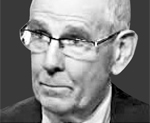Slow-growth forecasts are wrong
Published: 23 Jul. 2014, 21:26

A. Gary Shilling
That was the case in the late 1970s and early 1980s, when many economists presumed high inflation would last forever. Instead, we got disinflation by the mid-1980s. Similarly, the post-war baby boom spawned theories of a frightening population explosion. A post-war baby bust soon followed.
Another example of theory following fact was the Great Moderation thesis of 2005-6. Aggressive monetary stimulus after the 2000 stock market collapse appeared to have stabilized the economy. Many experts believed that central bankers had overcome the business cycle and achieved an equilibrium that would continue indefinitely.
Of course, it didn’t. Excessive credit fueled a housing bubble and caused the 2007-9 recession. In truth, the great moderation aided and abetted that recession.
And now, with slow economic growth of just 2.1 percent over the five-year recovery, theories abound that weak growth will last forever.
Harvard University economists Carmen Reinhart and Kenneth Rogoff, authors of the 2011 book “This Time Is Different: Eight Centuries of Financial Folly,” are among the theorists. Their earlier2010 paper concluded that when government debt exceeds 90 percent of gross domestic product, the economy contracts at a 0.1 percent annual rate. Their findings, published just as government debts were ballooning and major economies barely growing, was accepted gospel.
Glenn Hubbard, the Columbia Business School dean and a former chairman of the White House Council of Economic Advisers, and Tim Kane, chief economist at the Hudson Institute, have even more basic concerns. They believe great powers fall into the trap of “denying the internal nature of stagnation, centralizing power and shortchanging the future to overspend on their present.”
Larry Summers, the runner-up to replace Ben Bernanke as Federal Reserve chairman, is concerned about “secular stagnation.” He defines this as persistently slow growth due to slow labor-force expansion and muted productivity growth, which was temporarily offset by the dot-com bubble of the late 1990s and the housing bubble.
Niall Ferguson, who teaches at Harvard and is a fellow at the Hoover Institution, joins the throng with his book “The Great Degeneration.” He believes ever-encroaching government is strangling private initiative, especially in the United States. To him, representative government, the free market, the rule of law and civil society are threatened.
Ferguson zeroes in on the explosion of public debt in the United States and Europe, the destruction of free markets by excessive regulation and the replacement of the rule of law by the “rule of lawyers.”
Then there is Robert Gordon, the Northwestern University economics professor who believes all the big growth-driving technologies have been fully exploited. He sees nothing to rival the economic impact of the automobile, telephone, phonograph, motion pictures and radio, or the post-World War II developments, including television, air conditioning, jet planes and the interstate highway system.
Computers and the Internet are essentially fully exploited, Gordon says, so 2 percent annual output growth per capita - which was the case from 1891 to 2007 - is over. When the departure of millions of post-war babies from the work force is combined with America’s lousy education system and growing income inequality, real annual GDP growth of only 1 percent is likely. Gordon says the overwhelming majority of Americans will see their incomes grow just 0.5 percent annually.
Barron’s magazine joined the slow-growth chorus with a cover story last October. It focused on slow growth in the U.S. labor force in coming decades due to low birthrates and less immigration. These trends are global, author Jonathan Laing maintains. He also cites the labor-force participation rate, which has fallen to its lowest level in decades.
Economic growth results from both employment and productivity gains, yet Laing believes that productivity advances will be muted in the decades ahead. Even if productivity growth picks up, Laing concludes, it will be because machines have replaced many middle-income employees.
Some of these pessimistic arguments about America’s future economic growth and structure have merit. It’s true that increased government regulation will stifle innovation and reduce efficiency and, therefore, growth. Then there’s the growing percentage of Americans who depend on the government for income or support - everyone from civil servants and military members to Social Security and food-stamp recipients.
In 1950, 28.7 percent of Americans received meaningful financial support from the government - enough that they would protest if their goodies were removed. The percentage exceeded half - 52.4 percent - in 1970 and jumped to 58.2 percent in 2007. With post-war babies drawing Social Security and Medicare benefits, and with high unemployment spawning government job-creating efforts, I see the total exceeding 67 percent in 2018.
When more than half the population has their feet firmly planted in the government feeding trough, you might think there would be no end to the goodies they vote themselves. After all, this is a democracy. Yet that 50 percent level was breached by 1970, 43 years ago. I believe such voter restraint reflects the American character of deep-seated self-sufficiency. People apparently still believe they can get further on their own merit than by pushing government to redistribute income in their favor.
With these caveats, I disagree with the chorus of pessimists who foresee slow economic growth, at best, in the years ahead. I’ll explain why in part 2 of this two-part series.
*The author, a Bloomberg View columnist, is president of A. Gary Shilling & Co., a consultancy in Springfield, New Jersey.
By A. Gary Shilling










with the Korea JoongAng Daily
To write comments, please log in to one of the accounts.
Standards Board Policy (0/250자)